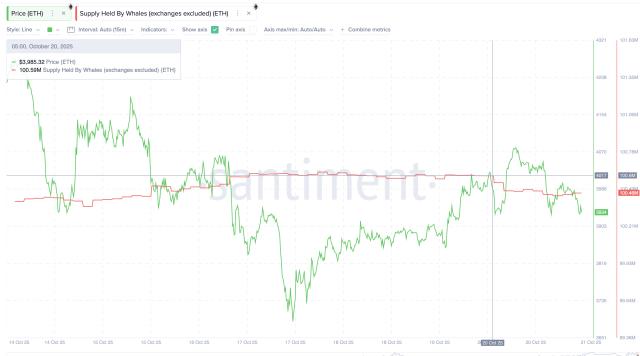Chainfeeds Introduction:
From the perspective of liquidity, it is not a bull market now. Judging from the trends of BTC and US stocks, it is a bull market now.
Article Source:
https://x.com/Phyrex_Ni/status/1978603541511172406
Article author:
Phyrex
Viewpoint:
Phyrex: In my August tweet, I said this isn't a typical bull market. A true bull market is one characterized by abundant liquidity. However, as for current liquidity, it's clear to everyone that it's not very good. The liquidity data clearly shows that there's no fundamental difference between 2025 and 2022; both are at lower levels. However, looking at it another way, it seems that Bitcoin and the Nasdaq index have no direct correlation with liquidity. In 2022, liquidity was insufficient, and the Nasdaq and BTC fell. However, after 2024, when liquidity remained unchanged, both the Nasdaq and BTC rose, with the surge being particularly pronounced in 2025. Looking at it another way, I've tagged Chainlink and Nike's relationship with liquidity. Clearly, in both cryptocurrencies and US stocks, LINK is currently the most popular oracle in the crypto and also has the highest-ranked practical application. Nike, needless to say, is a trendy sports shoe brand and a Fortune 500 company. They seem to be more reliant on liquidity than liquidity. Good liquidity signals a bull market for them, while poor liquidity signals a bear market. Therefore, two conclusions can be drawn: A. From a liquidity perspective, it's not a bull market. B. Judging from the trends of BTC and US stocks, it is a bull market. Why do these seemingly contradictory views arise? What exactly should we use to judge a bull market, and what fueled the rise of BTC and US stocks? From my perspective, there are undoubtedly two reasons: A. The Federal Reserve's shift from interest rate hikes to rate cuts. B. Trump's inauguration as president. While this change in monetary policy hasn't led to improved liquidity, it has led to an increase in risk appetite. This is a crucial point. First, liquidity is influenced by monetary policy, which has gradually shifted from tightening to easing. Regardless of how the Fed views it, this is an inevitable outcome; it's simply a matter of time. In other words, the US entering a period of monetary easing is inevitable. There may be bumps along the way, and it may not be smooth sailing, but this period won't be very long. The main reason liquidity hasn't been fully released yet is that the market hasn't yet seen the Fed enter a period of true easing. Even the elimination of the SLR and the halt to balance sheet reduction have yet to be implemented. But as I said, this is inevitable, and so the market anticipates a decline in the US dollar index. Under normal circumstances (non-recessionary), when the US dollar index declines, investors' risk appetite increases, and their funds gradually shift from low-risk assets like US Treasuries (due to lower yields) to higher-risk US stocks and cryptocurrencies. While liquidity hasn't fully materialized yet, limited liquidity is already concentrating on leading stocks in popular sectors. This sector is AI. AI has become both a defensive safe-haven asset and a profitable risk asset. This bubble may eventually burst, but it's unlikely to do so in the near term. Fueling the AI bubble aren't just risk markets, but also the US government and the US president. Since taking office, Trump has stepped up policy support for AI and the technology sector, emphasizing market-based, low-regulation, and politically driven approaches to promote AI innovation and industrial expansion. At the same time, Trump also extended his support for AI to cryptocurrencies. (There's so much to say here, I'd be hard to fathom if I told you, so just know there's significant support. If you don't believe me, ask AI.) Regardless of the motivation, Trump has galvanized strong political and policy support for cryptocurrencies in the US, significantly reducing pressure from regulators like the SEC and CFTC. Tech companies, including AI, have been early supporters of cryptocurrencies, and many tech leaders are deeply interested in them. The correlation between the Nasdaq and $BTC shows that the correlation between US stocks and cryptocurrencies has remained high in recent years. While there are occasional divergences, the overall trend of the Nasdaq and Bitcoin remains highly aligned. The Nasdaq's core component is AI, and AI-focused tech companies are inherently closely tied to cryptocurrencies. This correlation is particularly pronounced in 2025, with the correlation coefficient between BTC and the Nasdaq index approaching 0.8, and its 52-week correlation with Nvidia reaching a high of 0.75. For many, the underlying reasons for this correlation aren't particularly concerning. Simply understand that both AI and BTC symbolize future technology and anti-establishment systems, attracting the same high-risk appetite for funds and institutions. Some investors also view BTC as a shadow asset of the Nasdaq, with a correlation of approximately 70% to tech stocks and 30% to gold.
Content Source








